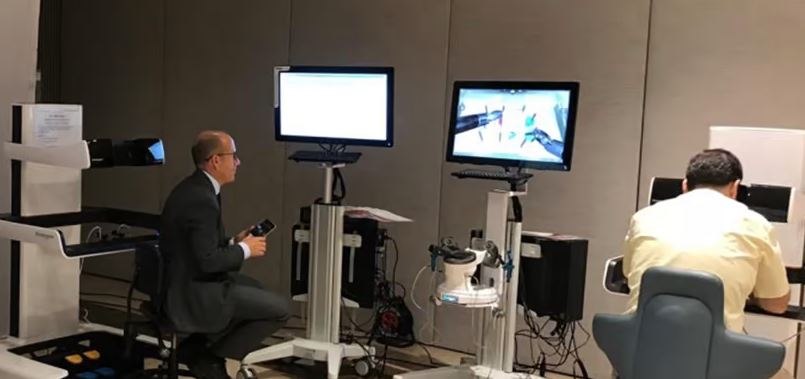Customer Company Size
Large Corporate
Region
- America
Country
- United States
Product
- Aravo
Tech Stack
- Supplier Information Management
- ERP system
- SaaS platform
Implementation Scale
- Enterprise-wide Deployment
Impact Metrics
- Cost Savings
- Productivity Improvements
Technology Category
- Platform as a Service (PaaS) - Data Management Platforms
Applicable Industries
- Education
Applicable Functions
- Procurement
Use Cases
- Supply Chain Visibility
- Inventory Management
Services
- System Integration
About The Customer
Boston University (BU) is a large, diverse, world-class institution that employs over 9,600 employees and supports 32,000 students in over 58 countries. BU is one of the largest private universities in the United States and one of Boston’s largest employers. Among its faculty and alumni, BU counts 6 Nobel Prize winners, including Martin Luther King, Jr., 22 Pulitzer Prize winners, and numerous Guggenheim and MacArthur fellows. In 2009, the University began the implementation of a new ERP system for human resources, procurement, and finance. With a go-live date of July 2011 for the new SRM system, the BU Sourcing and Procurement team was confronted with both a challenge and a unique opportunity.
The Challenge
In 2009, Boston University began the implementation of a new ERP system for human resources, procurement, and finance. With a go-live date of July 2011 for the new SRM system, the BU Sourcing and Procurement team was confronted with both a challenge and a unique opportunity. The team viewed the looming implementation as an opportunity to further improve efficiency and enhance their service to the University community. However, it soon became apparent that a new supplier management strategy had to be deployed prior to the ERP go-live date. With over 5,000 primary suppliers paid via legacy systems in 2009, decentralized processes continuously fostered data quality issues with BU’s supplier information. Initial supplier data reviews quickly highlighted supplier duplication, contradictory payment terms, and incomplete records. Further review illustrated that obtaining data from suppliers was an entirely manual process with few verifications for accuracy. Because of the overwhelming number of suppliers that needed to be managed with such a small staff, no effort to correct, update, or validate supplier data had ever been initiated.
The Solution
Aravo’s SIM-based (Supplier Information Management) approach ensures that there is a single source of truth for supplier data, accessible by disparate business functions around the globe, integrating into existing IT systems, and able to support existing business processes. In addition, as a SaaS platform, Aravo provides the University with the necessary flexibility to accommodate both existing and new business processes and IT systems, along with easy access so that supplier information can be retrieved from multiple systems – all at a lower cost than typical spend management and ERP solutions. Delivery via a SaaS solution meant that the University could rapidly deploy Aravo despite having extremely complex data and information requirements, workflows and business rules. Registration surveys were emailed from the Aravo platform to nearly 5,000 existing BU suppliers over the course of 6 months. The supplier registration survey responses captured sales contacts, addresses, tax and banking data, agreed upon payment terms, diversity certifications, OSHA and contractor safety data, insurance, and any current dual signature contracts. A workflow engine then pushed supplier data to the appropriate commodity team for review and approval.
Operational Impact
Quantitative Benefit

Case Study missing?
Start adding your own!
Register with your work email and create a new case study profile for your business.
Related Case Studies.

Case Study
Revolutionizing Medical Training in India: GSL Smart Lab and the LAP Mentor
The GSL SMART Lab, a collective effort of the GSL College of Medicine and the GSL College of Nursing and Health Science, was facing a challenge in providing superior training to healthcare professionals. As clinical medicine was becoming more focused on patient safety and quality of care, the need for medical simulation to bridge the educational gap between the classroom and the clinical environment was becoming increasingly apparent. Dr. Sandeep Ganni, the director of the GSL SMART Lab, envisioned a world-class surgical and medical training center where physicians and healthcare professionals could learn skills through simulation training. He was looking for different simulators for different specialties to provide both basic and advanced simulation training. For laparoscopic surgery, he was interested in a high fidelity simulator that could provide basic surgical and suturing skills training for international accreditation as well as specific hands-on training in complex laparoscopic procedures for practicing physicians in India.

Case Study
IoT platform Enables Safety Solutions for U.S. School Districts
Designed to alert drivers when schoolchildren are present, especially in low-visibility conditions, school-zone flasher signals are typically updated manually at each school. The switching is based on the school calendar and manually changed when an unexpected early dismissal occurs, as in the case of a weather-event altering the normal schedule. The process to reprogram the flashers requires a significant effort by school district personnel to implement due to the large number of warning flashers installed across an entire school district.

Case Study
Implementing Robotic Surgery Training Simulator for Enhanced Surgical Proficiency
Fundacio Puigvert, a leading European medical center specializing in Urology, Nephrology, and Andrology, faced a significant challenge in training its surgical residents. The institution recognized the need for a more standardized and comprehensive training curriculum, particularly in the area of robotic surgery. The challenge was underscored by two independent studies showing that less than 5% of residents in Italian and German residency programs could perform major or complex procedures by the end of their residency. The institution sought to establish a virtual reality simulation lab that would include endourological, laparoscopic, and robotic platforms. However, they needed a simulator that could replicate both the hardware and software of the robotic Da Vinci console used in the operating room, without being connected to the actual physical console. They also required a system that could provide both basic and advanced simulation training, and a metrics system to assess the proficiency of the trainees before they performed surgical procedures in the operating theater.

Case Study
Edinburgh Napier University streamlines long-distance learning with Cisco WebEX
• Geographically dispersed campus made in-person meetings costly and inconvenient.• Distance-learning programs in Malaysia, India, and China required dependable, user-friendly online tools to maximize interaction in collaborative workspaces.• Virtual learning environment required a separate sign-in process, resulting in a significant administrative burden for IT staff and limited adoption of collaboration technology.

Case Study
8x increased productivity with VKS
Before VKS, a teacher would spend a lot of time showing a group of 22 students how to build a set of stairs within a semester of 120 hours. Along with not leaving the teacher much time to provide one-on-one support for each student to properly learn carpentry, it also left a considerable amount of room for error. Key information would be misinterpreted or lost as the class was taught in the typical show-and-tell way.

Case Study
Scalable IoT Empowering GreenFlex's Sustainable Growth
GreenFlex, a company that supports sustainable development, decarbonization, and energy efficiency, faced several challenges in its quest to expand its business. The company needed to deploy a robust and sustainable IoT technology to support its growth. It was crucial for them to monitor and control devices at customer sites in a safe and reliable manner. They also needed to integrate devices across a range of communication protocols and gather and act on data to meet efficiency targets. GreenFlex had previously built IoT capabilities into its digital platform, GreenFlexIQ, to monitor and manage customer sites remotely. However, they soon realized that they needed a new platform to support their ambitions. They needed a platform that could scale to connect more devices for production management and make it easier for the operations team to manage devices in the field.







